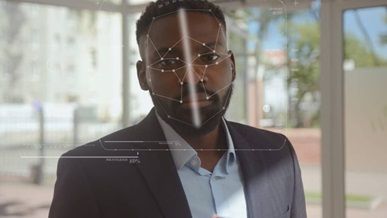The U.S. Department of Homeland Security’s (DHS) new report on the department’ use of facial recognition (FR) and face capture (FC) technologies underscores the importance of maintaining a balance between security and civil liberties in the age of artificial intelligence.
The report highlights that as DHS continues to deploy FR/FC technologies, it faces the dual challenge of maximizing their potential while minimizing their risks. Future efforts will likely focus on improving algorithmic fairness, strengthening data protection measures, and enhancing public awareness about the benefits and limitations of these systems.
The report was released on the heels of renewed scrutiny of the use of FR/FC across the DHS enterprise. Earlier this month, House Committee on Homeland Security Chairman Mark E. Green and Rep. Carlos Gimenez, chairman of the Subcommittee on Transportation and Maritime Security, formally “requested a detailed review from the Government Accountability Office on the Transportation Security Administration’s (TSA) implementation of biometric identification and use of AI-driven technology in its homeland security mission.”
Other lawmakers have taken similar recent actions regarding their concerns about privacy, civil liberties, and the efficacy of using these biometric technologies, reflecting a growing bipartisan effort to scrutinize and regulate the use of advanced technologies by federal agencies.
Nevertheless, DHS says that by committing to ethical innovation and transparent governance, it aims to demonstrate that privacy and security can coexist in the digital era. However, the broader societal debate on the role of surveillance technologies in public life remains ongoing and it is imperative that policymakers, technologists, and citizens engage in this discourse to shape a future that respects both individual rights and collective security.
The report, required by DHS Directive 026-11, constitutes an analysis of FR/FC use cases and provides a comprehensive overview of the benefits, challenges, and regulatory safeguards associated with FR/FC systems. The directive established an enterprise policy for the authorized use of FR and FC technologies by DHS, which says the “report presents more information than ever previously shared about how we use and govern these technologies.”
The report encompasses completed performance reviews of eight priority uses of FR/FC based on direct testing, analysis of operational reporting statistics, and reviews of third-party testing results, and analyzed demographic differentials where possible.
“Face recognition technology can be controversial, and when used improperly, it can cause real harm. That’s why in 2023, DHS implemented the most stringent requirements of any federal agency for how FR can be used and how it must be tested,” said Eric Hysen, former DHS CIO and Chief AI Officer.
Facial recognition and face capture technologies have become instrumental in enhancing efficiency and security across DHS operations. Used for identity verification at airports, border crossings, and during criminal investigations, these technologies promise improved public interactions and more robust law enforcement capabilities. FR/FC technologies automate processes traditionally reliant on manual verification, such as matching traveler identities to passports, thus reducing human error and increasing operational speed.








